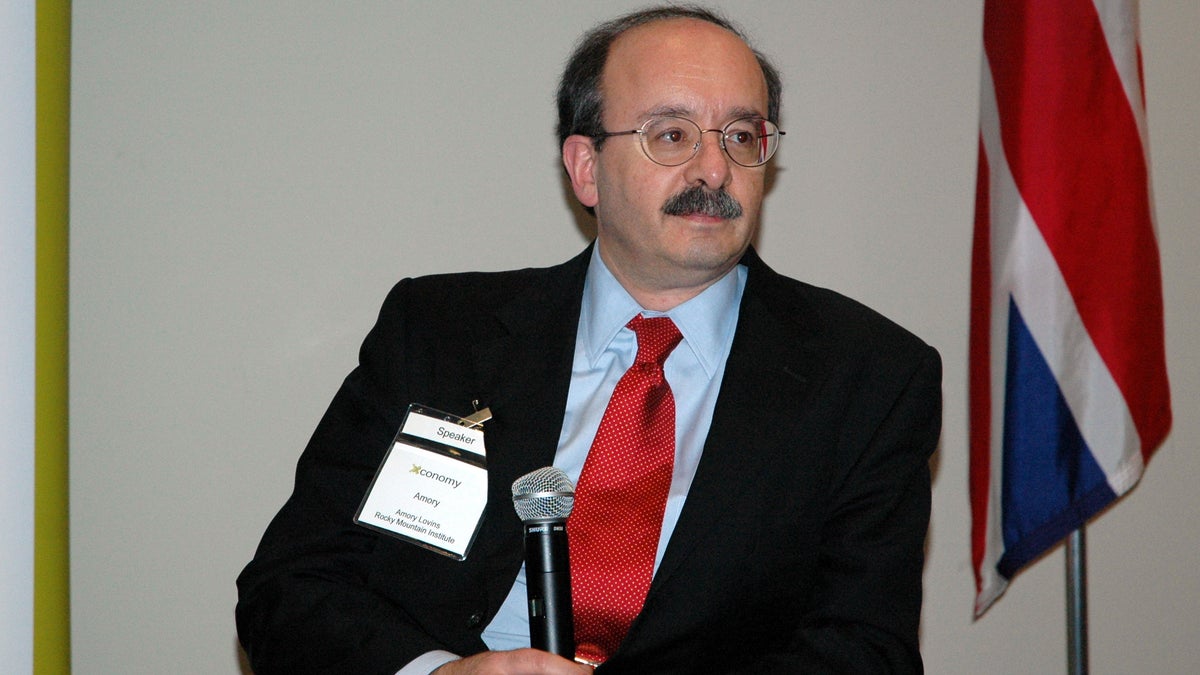Lovins: How to break the fossil fuel deadlock
No oil, no coal, no nuclear. Radical thinker Amory Lovins says combining cutting-edge technology through integrated design is the key to clean energy innovation.

CAMBRIDGE, Mass.--To those who say the world needs dramatic technology breakthroughs to get off of fossil fuels, energy guru Amory Lovins has a succinct answer: integrated design.
Lovins has been working in the trenches of energy and efficiency for more than 30 years, gaining a reputation as a radical thinker able to imagine possibilities others can't. He was here at MIT yesterday giving a presentation on his latest book, "Reinventing Fire" and speaking to entrepreneurs and investors at an event organized by Xconomy.
The book, written by Lovins and colleagues at his "think and do tank" Rocky Mountain Institute, lays out a path for cutting oil, coal, and nuclear power out of the U.S. energy mix by 2050. This transformation can be led by businesses seeking profit and won't require Congress to pass any laws, he said.
Central to Lovins' ideas is a holistic approach to design that he says is critical for game-changing improvements in performance. That runs counters to other visionaries on energy and climate who say that breakthroughs are the only hope for moving to sustainable energy in an economic way. Bill Gates, for example, has made that case and invested in a nuclear startup that can make electric power from spent fuel among other energy technologies.
Lovins said that some breakthroughs will likely happen, but makes a compelling case that adopting multiple existing technologies in innovative ways can yield dramatic results as well. The benefits of electric powertrain, for example, are more pronounced if cars are aerodynamic and are lightweight, he said.
"In autos, you could combine revolutionary advances in ultralight materials, structural manufacturing, and electric powertrains into three very steep and synergistic learning curves that change the automotive game very quickly," Lovins told me.
Three German automakers--Volkswagen, BMW, and Audi--are developing electric cars using lightweight carbon fiber for release next year, he noted. Four other automakers are adopting this strategy, too.
What's the holdup?
A lighter design means the electric car can operate with smaller batteries, one way to save costs. It also can lower the manufacturing costs because carbon fiber material allow builders to cast large parts that don't require painting and other body work. Lovins estimates the capital cost of manufacturing this way is 80 percent cheaper than today's methods of building with steel.
"It's a lot easier to do than people normally think automaking is and that means we could be facing insurgents as well as incumbents," he said, noting the Rocky Mountain Institute has spun out companies--Bright Automotive and Fiberforge--focused on efficiency and lightweight composite materials.
Designing a whole building for efficiency and resiliency, rather than focusing on individual components such as solar panels or efficient appliances, also yields better results.
So why haven't radical breakthroughs occurred in auto and building efficiency performance? And will innovation in energy slow now that many venture capitalists have pulled back, having learned how slow and expensive building green-technology startups is?
During his talk last night, Lovins offered entrepreneurs and investors more vision than tactical advice on how to make money in clean energy and efficiency. Some of the "froth" has gone out of clean energy, but it's still drew hundreds of billions in investment last year and there are many ways to innovate with business models and policy, he noted.
Enacting laws to restrict greenhouse gases, which would benefit clean-energy innovation, aren't necessary, he said. Instead, changing utility regulations to incentivize energy efficiency and a feebate system to reward drivers of efficiency vehicles could be done without Congress.
"The obstacles are mostly cultural, not technical or economic," he said when I asked what's holding up efficiency breakthroughs in autos. "Cultural barriers are often formidable and most likely to be changed by competitive pressure."

